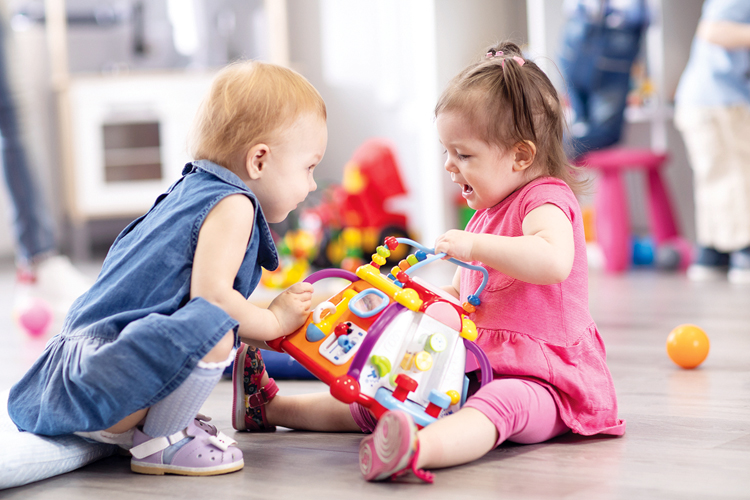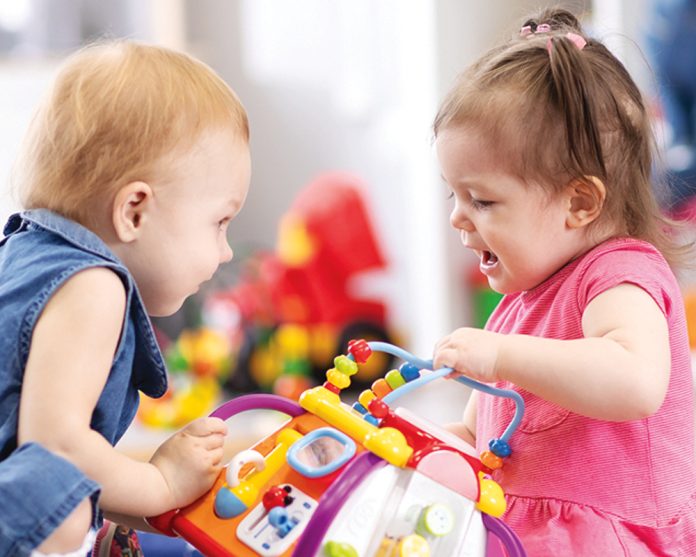
“You need to give that to your brother!” “Sharing is caring!”
“If you don’t share that, I’m taking it away.”
How many times have we said these things or heard them growing up? When it comes to sharing, parents tend to put a lot of pressure on their children and themselves.
Imagine you’re almost finished working on an assignment. Your boss comes over, snatches your laptop and tells you to share with your college. You would probably throw a fit. You may even want to quit for the day and go home. As unreasonable as this scenario seems, so is the expectation for young children to share.
There are big emotions that come with others wanting that which we wish to keep close. What most people don’t know is that sharing isn’t developmentally appropriate until the age of four. The American Academy of Pediatrics (AAP) suggests that children under three can’t comprehend the concept of sharing on their own. Mastering it requires a lot of time, practice and adult support. Even after years of practice and modeling, it’s extremely difficult.
What NOT to do :
The word “sharing” itself doesn’t mean much to a child. Use words that relate to what is actually happening. For example, if using the slide: “you go down the slide, then he goes down the slide. Then, you go and he goes.”
Do not threaten your child with punishment for not sharing. We can explain that we should take turns and encourage giving up the object. This still does not mean that a child will take turns.
If a child has a toy, do not take it from him. Sharing should come from an intrinsic desire to give, not being forced or shamed into it. Forced sharing may achieve the opposite effect and make a child more possessive. This could cause aggression and tantrums.
What CAN we do?
The first step is continually modeling sharing at home. Practice with a toy, saying “I’m going to take a turn with it and when I’m done, I will give you a turn. When you feel ready, give it back to me.” Later, apply this to social situations.
Allow your child to play with the object for as long as theylike. Point out that another child would like it, but do not stop your child from playing with it. While this may sound surprising, your child’s desire to use something doesn’t end because someone else would like it too. Stopping them from playing or enjoying themselves does not teach the concept. Toddlers are learning empathy and cannot put themselves in another person’s shoes. They may know another child wants their toy, but simply does not care. That is a cognitive skill developed later as well (age 4).
Offer alternatives if your child is the one waiting for a turn. Validate the child’s feelings. “It’s hard to wait for a turn with a toy. Let’s play with this yellow truck for now. Show me how the wheels spin.” Encourage your child to ask for a turn. If the other child says no, let your child know they’re not ready just yet.
Before a play date, ask if she has anything special she would like to put away. We all have things we like to keep just for ourselves, children are no different. We can also ask if there are toys we’d like to take out specifically to share with our friends. “Are there things you’d like to play with when Grace comes over?” “Mackenzie really loved painting last time, let’s get our paint set out!” It is also a good idea to select activities that don’t require sharing for very young children. Having multiples of things ( such as blocks or two sets of shovels) is ideal but not always practical.
Praise! Positive reinforcement is often the best form of “behavior modification.” When your child gives a piece of her snack to you, make it a big deal. Show gratitude and let her see that it is bringing you happiness. Associating a positive outcome with sharing will help aide in its development.
While we can help foster this skill, it is important to remember it will come in time. When children are ready, just as with every milestone, they will learn to share. Once they understand the concept, it will not automatically mean they hand over every toy when asked. There is a learning curve, lots of emotions and practice ahead!












 20 lucky winners will win $500 each in prizes totaling $10,000.
20 lucky winners will win $500 each in prizes totaling $10,000. 